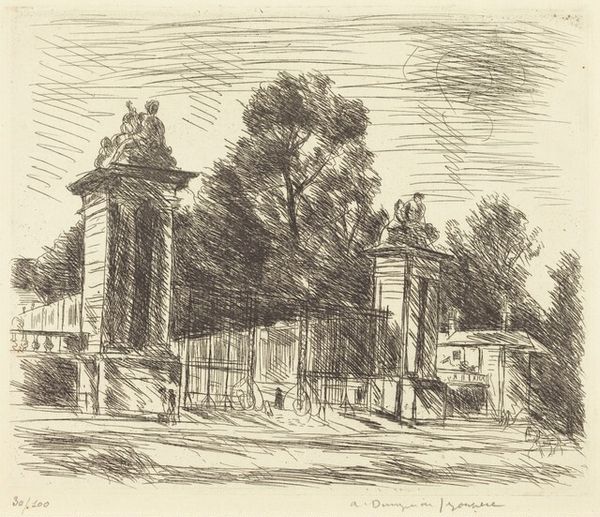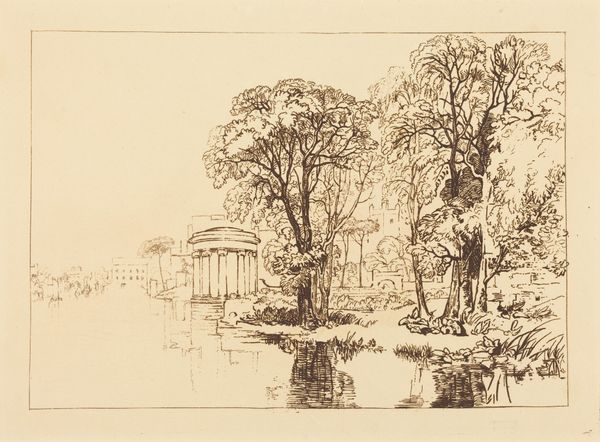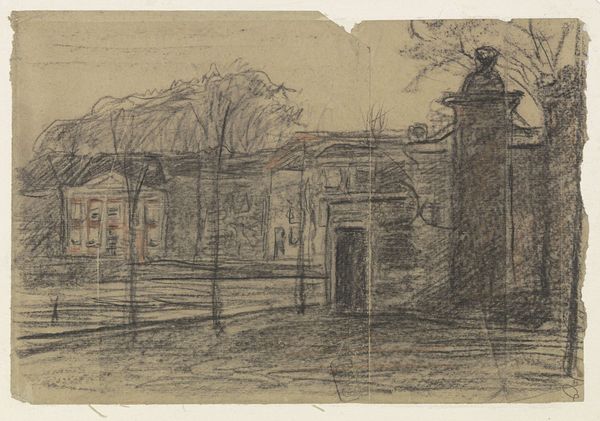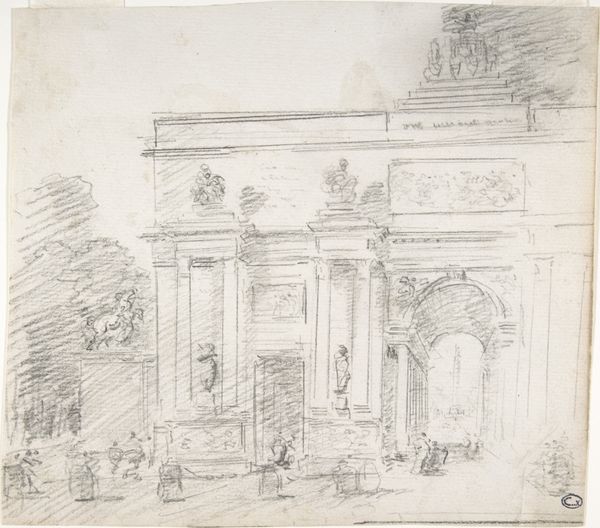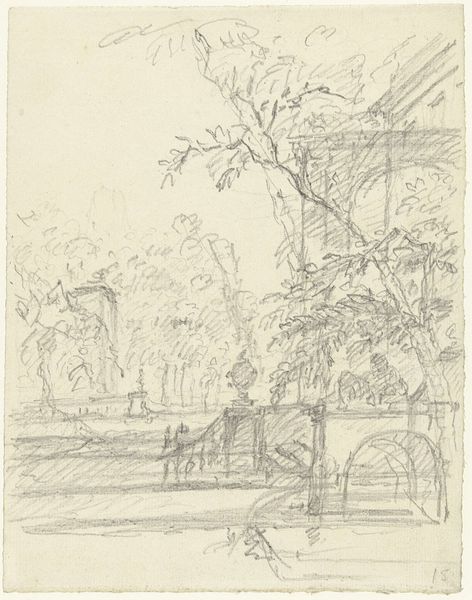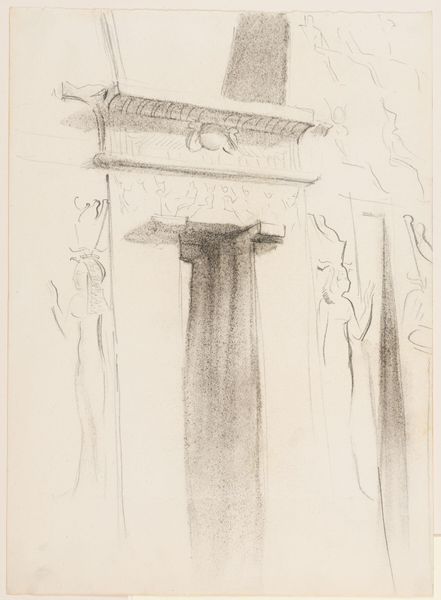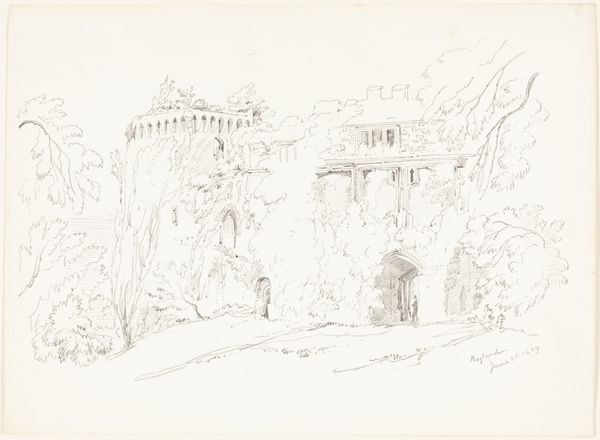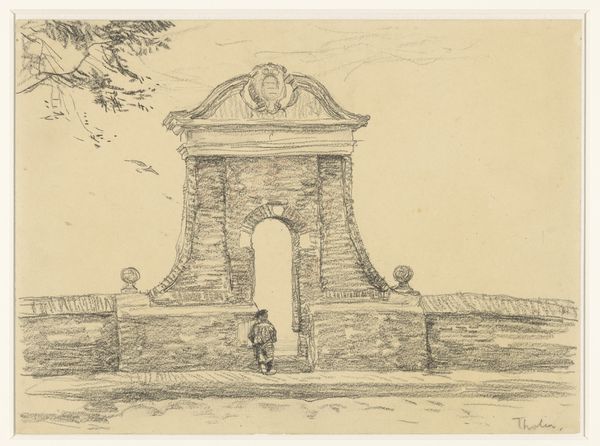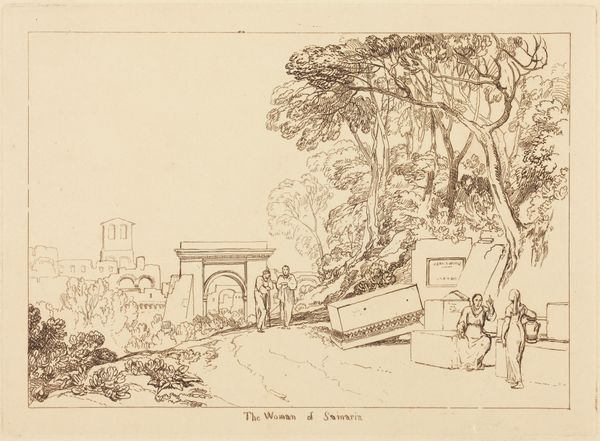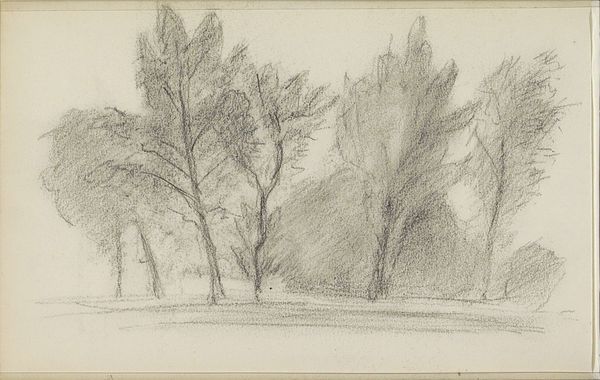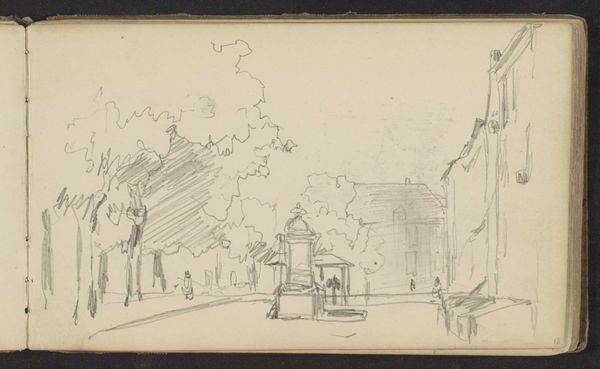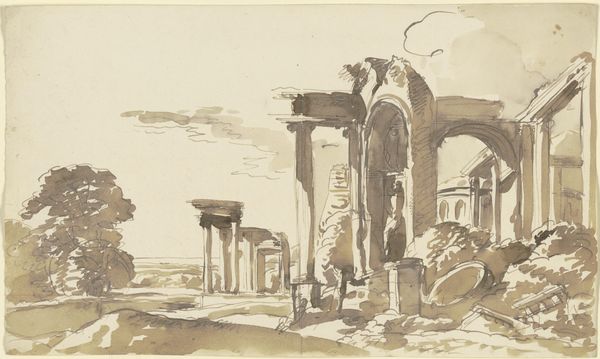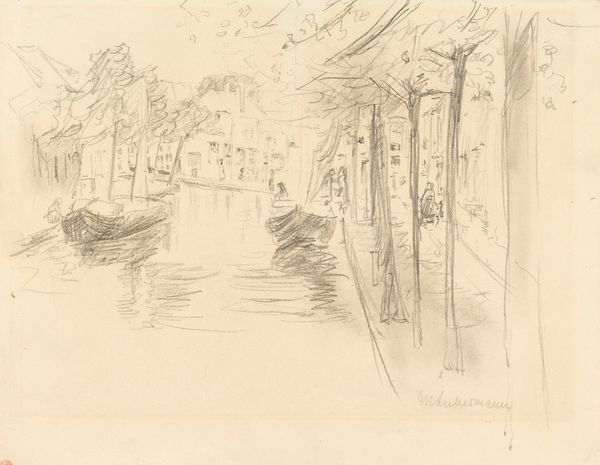
Entrance to the Orangerie, Versailles (Small Plate) (Versailles, l'Entree de l'Orange 1924
0:00
0:00
Copyright: National Gallery of Art: CC0 1.0
Andre Dunoyer de Segonzac's 'Entrance to the Orangerie, Versailles' is an etching, a printmaking technique dating back to the Middle Ages. The artist would have covered a metal plate with a waxy ground, scratched an image into it, and then bathed the plate in acid. The acid bites into the exposed lines, which are then inked and printed. This print exemplifies the immediacy and intimacy that etching offers. Segonzac has used the technique to render the scene with a loose, sketch-like quality, almost as if it were a quick impression captured on the spot. Note the cross-hatching and the drypoint lines, adding depth and texture to the image. While the scene depicts the opulence of Versailles, the medium itself speaks to a different kind of labor, that of the skilled printmaker. Etching democratized image-making, allowing for the wider dissemination of art, and its appreciation beyond the walls of palaces. So, consider how the choice of material and process can subtly shift our perception of even the most aristocratic subjects.
Comments
No comments
Be the first to comment and join the conversation on the ultimate creative platform.
